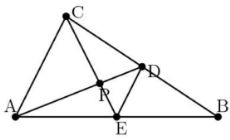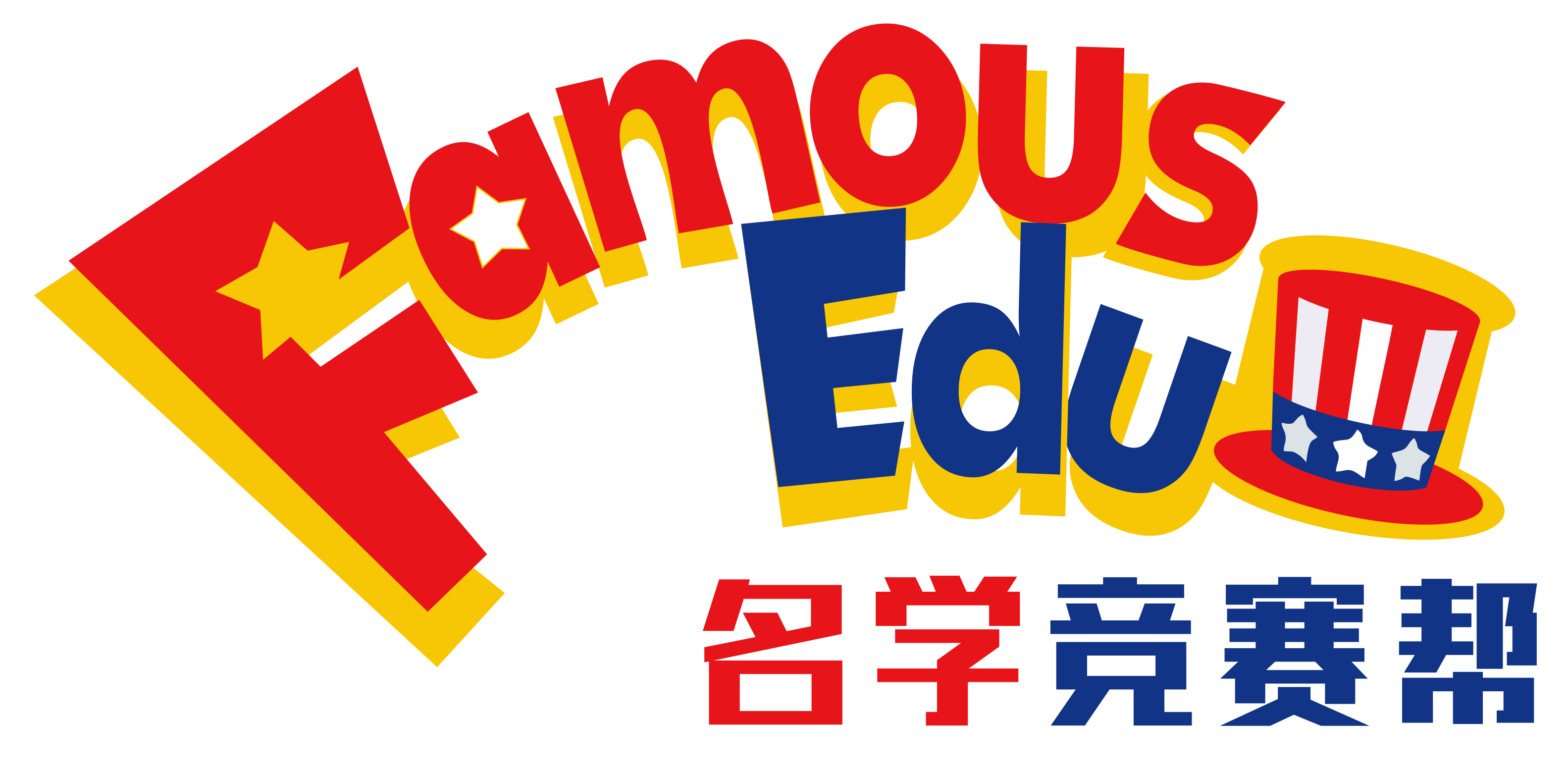2013年 AMC10 B卷
2013 AMC 10B Problems
![]() Problem 1
Problem 1
What is ?

Problem 2
Mr. Green measures his rectangular garden by walking two of the sides and finding that it is 15 steps by 20 steps. Each of Mr. Green's steps is 2 feet long. Mr. Green expects a half a pound of potatoes per square foot from his garden. How many pounds of potatoes does Mr. Green expect from his garden?
![]()
Problem 3
On a particular January day, the high temperature in Lincoln, Nebraska, was 16 degrees higher than the low temperature, and the average of the high and the low temperatures was 3°. In degrees, what was the low temperature in Lincoln that day?
![]()
Problem 4
When counting from 3 to 201, 53 is the 51st number counted. When counting backwards from 201 to 3, 53 is the nth number counted. What is n?
![]()
Problem 5
Positive integers a and b are each less than 6. What is the smallest possible value for 2 · a - a · b ?
![]()
Problem 6
The average age of 33 fifth-graders is 11. The average age of 55 of their parents is 33. What is the average age of all of these parents and fifth-graders?
(A) 22 (B) 23.25 (C) 24.75 (D) 26.25 (E) 28
Problem 7
Six points are equally spaced around a circle of radius 1. Three of these points are the vertices of a triangle that is neither equilateral nor isosceles. What is the area of this triangle?

Problem 8
Ray's car averages 40 miles per gallon of gasoline, and Tom's car averages 10 miles per gallon of gasoline. Ray and Tom each drive the same number of miles. What is the cars' combined rate of miles per gallon of gasoline?
(A) 10 (B) 16 (C) 25 (D) 30 (E) 40
Problem 9
Three positive integers are each greater than 1, have a product of 27000, and are pairwise relatively prime. What is their sum?
(A) 100 (B) 137 (C) 156 (D) 160 (E) 165
Problem 10
A basketball team's players were successful on 50% of their two-point shots and 40% of their three-point shots, which resulted in 54 points. They attempted 50% more two-point shots than three-point shots. How many three-point shots did they attempt?
(A) 10 (B) 15 (C) 20 (D) 25 (E) 30
Problem 11
Real numbers x and y satisfy the equation x2 + y2 = 10x - 6y -34 . What is x + y?
(A) 1 (B) 2 (C) 3 (D) 6 (E) 8
Problem 12
Let S be the set of sides and diagonals of a regular pentagon. A pair of elements of S are selected at random without replacement. What is the probability that the two chosen segments have the same length?

Problem 13
Jo and Blair take turns counting from 1 to one more than the last number said by the other person. Jo starts by saying "1", so Blair follows by saying "1, 2" . Jo then says "1, 2, 3," , and so on. What is the 53rd number said?
(A) 2 (B) 3 (C) 5 (D) 6 (E) 8
Problem 14
Define a ♣b = a2b - ab2. Which of the following describes the set of points (x, y) for which x ♣y = y ♣x ?
(A) a finite set of points
(B) one line
(C) two parallel lines
(D) two intersecting lines
(E) three lines
Problem 15
A wire is cut into two pieces, one of length a and the other of length b. The piece of length a is bent to form an equilateral triangle, and the piece of length b is bent to form a regular hexagon. The triangle and the hexagon have equal area. What is ![]() ?
?

Problem 16
In triangle ABC, medians AD and CE intersect at P, PE = 1.5, PD = 2, and DE = 2.5. What is the area of AEDC?

![]()
Problem 17
Alex has 75 red tokens and 75 blue tokens. There is a booth where Alex can give two red tokens and receive in return a silver token and a blue token, and another booth where Alex can give three blue tokens and receive in return a silver token and a red token. Alex continues to exchange tokens until no more exchanges are possible. How many silver tokens will Alex have at the end?
![]()
Problem 18
The number 2013 has the property that its units digit is the sum of its other digits, that is 2 + 0 + 1 = 3. How many integers less than 2013 but greater than 1000 share this property?
![]()
Problem 19
The real numbers c, d, a form an arithmetic sequence with a ≥ b ≥ c ≥ 0. The quadratic ax2 + bx + c has exactly one root. What is this root?
![]()
Problem 20
The number 2013 is expressed in the form ![]() , where a1 ≥ a2 ≥ ... ≥am and b1 ≥ b2 ≥ ... ≥ bn are positive integers and a1 + b1 is as small as possible. What is |a1 - b1| ?
, where a1 ≥ a2 ≥ ... ≥am and b1 ≥ b2 ≥ ... ≥ bn are positive integers and a1 + b1 is as small as possible. What is |a1 - b1| ?
![]()
Problem 21
Two non-decreasing sequences of nonnegative integers have different first terms. Each sequence has the property that each term beginning with the third is the sum of the previous two terms, and the seventh term of each sequence is N. What is the smallest possible value of N?
![]()
Problem 22
![[asy] pair A,B,C,D,E,F,G,H,J; A=(20,20(2+sqrt(2))); B=(20(1+sqrt(2)),20(2+sqrt(2))); C=(20(2+sqrt(2)),20(1+sqrt(2))); D=(20(2+sqrt(2)),20); E=(20(1+sqrt(2)),0); F=(20,0); G=(0,20); H=(0,20(1+sqrt(2))); J=(10(2+sqrt(2)),10(2+sqrt(2))); draw(A--B); draw(B--C); draw(C--D); draw(D--E); draw(E--F); draw(F--G); draw(G--H); draw(H--A); dot(A); dot(B); dot(C); dot(D); dot(E); dot(F); dot(G); dot(H); dot(J); label("A",A,NNW); label("B",B,NNE); label("C",C,ENE); label("D",D,ESE); label("E",E,SSE); label("F",F,SSW); label("G",G,WSW); label("H",H,WNW); label("J",J,SE); [/asy]](http://nwzimg.wezhan.cn/contents/sitefiles2050/10251729/images/43996781.png?) The regular octagon ABCDEFGH has its center at J. Each of the vertices and the center are to be associated with one of the digits 1 through 9, with each digit used once, in such a way that the sums of the numbers on the lines AJE, BJF, CJG, and DJH are all equal. In how many ways can this be done?
The regular octagon ABCDEFGH has its center at J. Each of the vertices and the center are to be associated with one of the digits 1 through 9, with each digit used once, in such a way that the sums of the numbers on the lines AJE, BJF, CJG, and DJH are all equal. In how many ways can this be done?
![]()
Problem 23
In triangle ABC, AB = 13, BC = 14, and CA = 15. Distinct points D, E, and F lie on segments ![]() ,
, ![]() , and
, and ![]() , respectively, such that
, respectively, such that ![]() ,
, ![]() , and
, and ![]() . The length of segment
. The length of segment ![]() can be written as
can be written as ![]() , where m and n are relatively prime positive integers. What is m + n?
, where m and n are relatively prime positive integers. What is m + n?
![]()
Problem 24
A positive integer n is nice if there is a positive integer m with exactly four positive divisors (including 1 and m) such that the sum of the four divisors is equal to n. How many numbers in the set {2010, 2011, 2012, ..., 2019} are nice?
![]()





